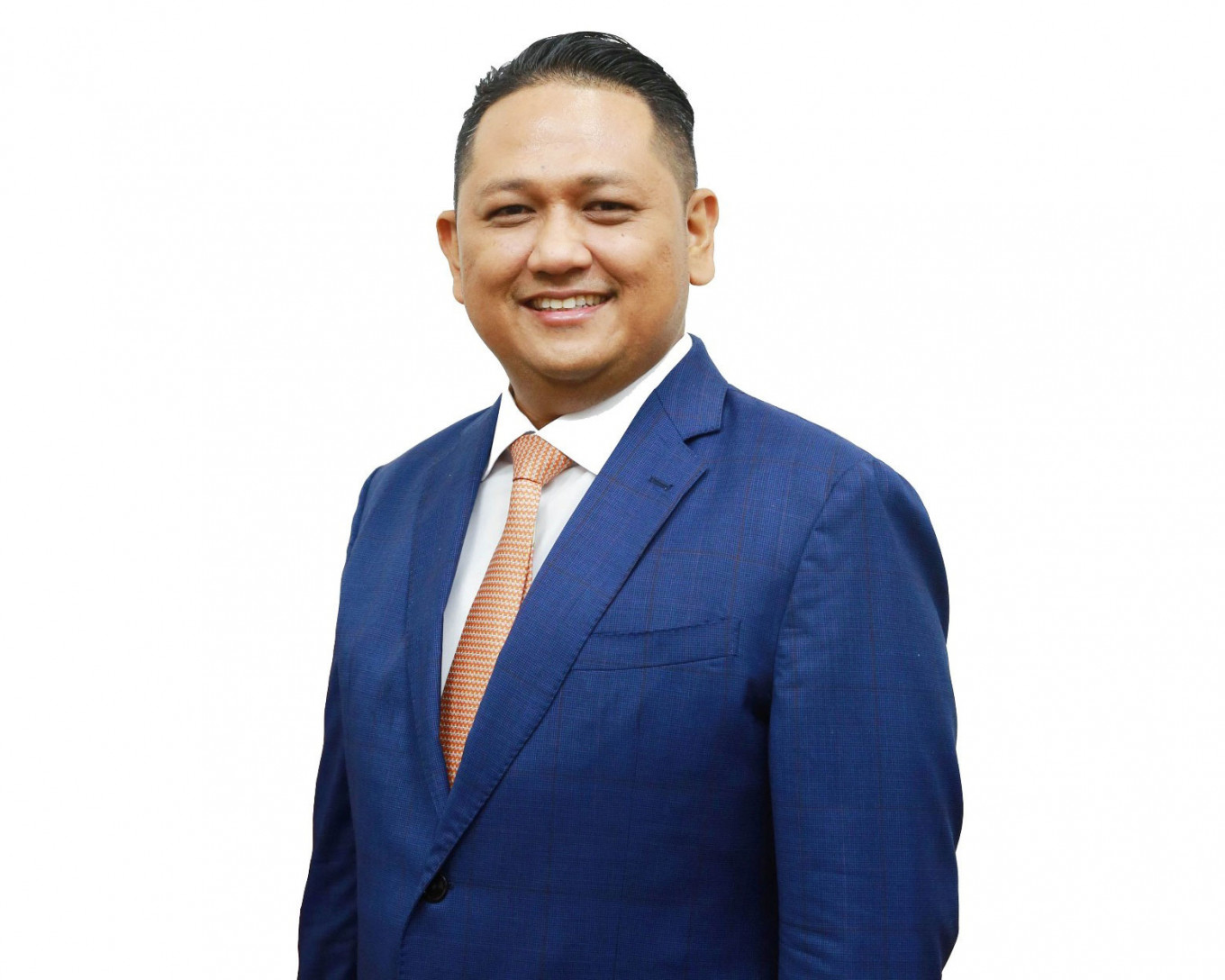Popular Reads
Top Results
Can't find what you're looking for?
View all search resultsPopular Reads
Top Results
Can't find what you're looking for?
View all search resultsSpecial Purpose Gov.Bond; a solution for infrastructure, pension fund & life insurance
As a growing economy, Indonesia still requires to build infrastructure, be it to ensure smooth and efficient logistics, supporting infrastructure for strategic industries, or to further boost tourism.
Change text size
Gift Premium Articles
to Anyone
By Pantro Pander Silitonga
About the writer: Pantro Pander Silitonga is business director of the Indonesia Financial Group (IFG) and chairman of Bahana TCW Investment Management. He is well-known as a strategy professional with a reputation for the ability to solve complex problems and to execute large and company-wide transformations.
As a growing economy, Indonesia still requires to build infrastructure, be it to ensure smooth and efficient logistics, supporting infrastructure for strategic industries, or to further boost tourism. Ensuring the availability of infrastructure funding is crucial for a growing economy like Indonesia.
The current scheme put strains on the balance sheets of construction companies. On the other hand, there is a huge potential pool of funds that is currently untapped, and with the right facilitation and structure, it could meaningfully complement the current infrastructure funding. Breakthroughs to crack open this potential synergy are much needed.
Typical infrastructure projects, such as building a toll-road, have a cash flow pattern reflecting an elongated S curve. It takes an uncertain time to completely clear the land, followed by construction time, before it reaches the operational stage. Even after the project reaches operational stage, it will take some time for utilization or traffic to pick-up before we can see a critical mass in positive cash flows. A typical toll-road might require 10-12 years before cash flows net of cost of financing turns positive, which means that whoever is financing infrastructure projects must have a long-term investment horizon.
Currently, state-owned construction companies finance the infrastructure projects using their own balance sheet, borrowing heavily from commercial banks with commercial terms. The prolonged negative cash flow adds much stress to their financial conditions causing practically all of them financial distress, especially on metrics in relation to debt repayment capacity, including a debt service ratio below 100 percent, negative cash flows and debt-to-equity ratio reaching above 100 percent. This scheme is not sustainable. We need a breakthrough funding scheme.
On a separate note, sectors such as life insurance and pension funds require long-term investment that provides them with stable returns and higher yields. Life insurance companies collect premiums now for future liabilities. Products such as term-life cover the mortality risk with a liability horizon beyond 10 years, depending on the entrance age. Similarly, pension funds collect monthly contributions from both employers and employees for future liabilities post-employment stage. Given that we have a young and productive population of 130 million, stimulating life insurance and pension funds now would allow us to increase our funding pool for future liabilities.
Our pension pool is way below our fair share. While the size of our economy is almost three times the size of Singapore’s economy, our pension fund pool is only a mere one sixth of Singapore’s pension pool fund. As the largest economy in Southeast Asia, we have a lot of homework still to catch up on pension and insurance penetration.
Furthermore, based on studies of pension funds among the state-owned enterprise ecosystem, the majority of defined benefit pension funds have an investment yield net of operational expenditures (OpEx) that is below the actuarial rate (the rate used to discount future liabilities). Given the limited options for investment options, breakthroughs are needed in instruments that provide long-duration investment with stable, yet higher returns.
An asset and liability management (ALM) concept is commonly used by financial institutions to match their assets with liabilities to ensure that they can fulfill their obligations. In this case, we are faced with industries that are potentially complementing each other. There is a potential for long-tenor funds generated from the life insurance and pensions industry to help contribute to infrastructure funding, also with a long-term investment horizon. For lack of a better terminology, this new concept can be called “macro ALM”.
Matching the needs of the two industries is like a two-edged sword. It serves two purposes. On one side of the fence, it can help fund infrastructure projects, with potential multiplier economic benefits. On the other side of the fence, it also can ensure that pension funds and life insurance companies will earn better investment results, potentially stirring up more funds flowing into these industries, and help to ensure the welfare of pensioners, as well as life insurance policy-holders.
The next question will be how we accomplish the objective above. The current regulation has allowed and to some extent encourages pension funds to invest in infrastructure or construction companies through subscription to their corporate bonds. While this is in the right direction toward the objective, given the financial condition of those companies, investing in their corporate bonds presents credit risks.
Alternatively, a pension fund can go direct to investing in the infrastructure assets. However, except for BPJS TK, Taspen and Asabri, most of the other pension funds do not have the scale to swallow a large-scale infrastructure project.
To break this vicious cycle, the government has a critical role. Our neighboring countries like Singapore and Thailand have higher insurance and pensions penetration. Both countries provide incentives for long-term deposits, such as for pensions or for insurance, in the form of tax incentives or better yields on their investments, guaranteed by the government. This could be one of the reasons why the insurance and pension fund penetrations in both countries are much higher than in Indonesia.
Specific to Singapore, the government formed the Central Provident Fund (CPF), consolidated savings for the purpose of pension protection, health insurance, as well as home ownership. The CPF draws mandatory contributions from both employees and employers, which in turn it invests in a special government bond called Singapore Government Securities (SSGS). The government then invests these funds through Singapore’s sovereign wealth fund, the GIC. To incentivize the CPF members, the yield in SSGS is more than twice that of regular government bonds.
A similar structure with more optimal yield and a focus on infrastructure projects given the needs in Indonesia, can be adopted as the solution to our infrastructure and pension funds issues. The government can issue a special purpose government bond for infrastructure funding, with a minimum tenor of 10 years, and better yields than regular government bonds. An investment instrument that is guaranteed by the government will induce confidence among pension funds and life insurance providers to increase investing in this instrument. In turn, we can expect higher participation in pension funds and life insurance.
The above scheme will stimulate pension funding and life insurance penetration, increasing the size of the pool of funds which can then be used for infrastructure. It would help secure funding for the many development projects; and eventually spur further economic growth.
The ideas expressed here do not represent The Jakarta Post's views and policies.












